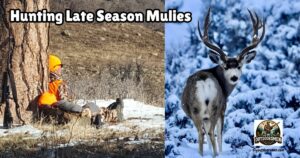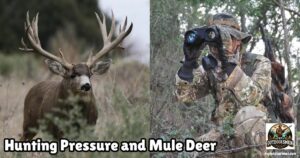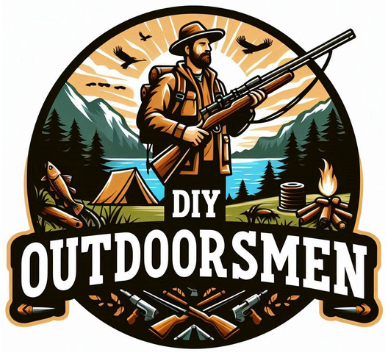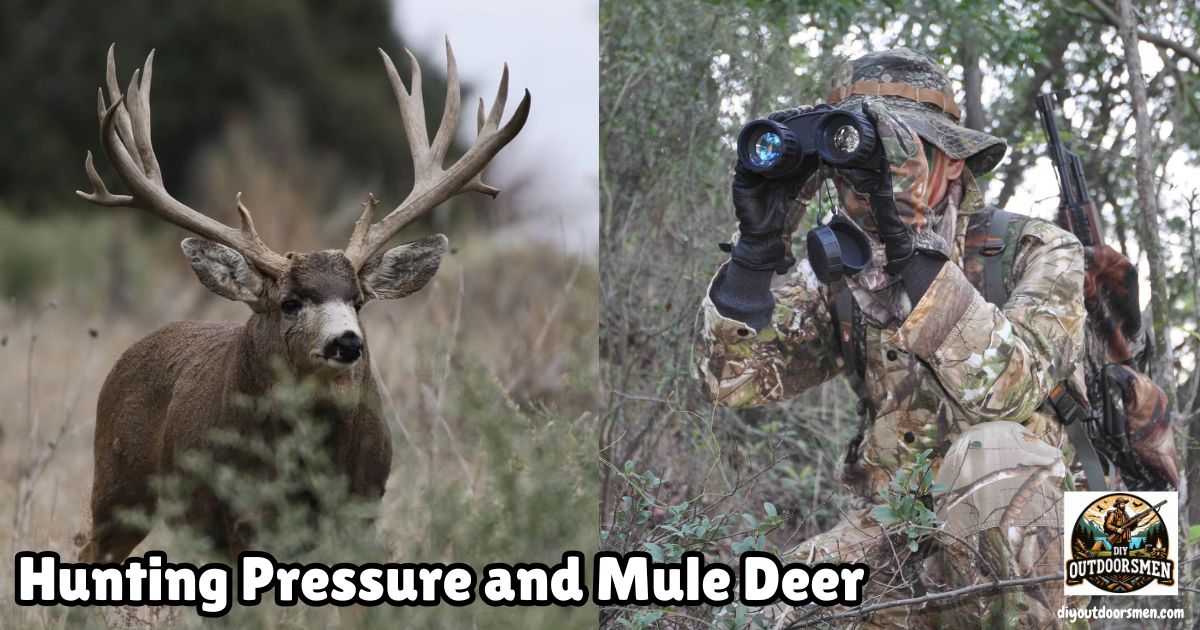Contents
- 1 How Hunting Pressure Changes Mule Deer Behavior
- 2 Daytime Movement and Nocturnal Habits
- 3 Habitat Choices When Pressure Increases
- 4 Proven Strategies for Hunting Pressured Mule Deer
- 5 Things to Think About Before Heading Out on Pressured Mule Deer Hunts
- 6 Advanced Tactics for Trophy Mule Deer Under Pressure
- 7 Common Questions About Mule Deer and Hunting Pressure
- 8 Essential Gear for Mule Deer Hunting Success
Mule deer hunting can be challenging, particularly when hunting pressure increases during the season. I find that recognizing how hunting pressure affects mule deer is the first step to having more consistent encounters with mature bucks. In this article, I’m sharing my experience along with useful facts and strategies that help me adapt and stay successful, even when other hunters are everywhere.
QUICK LOOK: Tips for Hunting Pressured Mule Deer
- Go deeper and hike farther: I nearly always notice fewer hunters and more deer the farther I get from roads and heavy-use areas. Scanning maps and using GPS to locate isolated draws, benches, or remote timber patches has put me close to unpressured bucks.
- Stick it out all day: Many hunters head back by midday. I’ve found more deer moving from beds or sneaking between thickets during the quieter hours between late morning and early afternoon, especially with fewer people out.
- Let other hunters move deer to you: When I see other hunters pushing through an area, I’ll set up near escape routes—like saddles, pinch points, or timber edges. Deer bumped by hunters often slip along these corridors to get out of danger’s way.
- Avoid crowd pressure: On public land, hunting midweek instead of weekends raises my encounter rate. I tend to see normal deer movement when activity drops after busy weekends.
- Focus on transition edges: Watching openings along the heavier cover just before sunset or after sunrise often reveals deer waiting to feed yet clinging to shelter. Scanning these seams has helped me spot bucks slipping along the edge without exposing themselves fully.
- Modify your calling and rattling: Calling too much on pressured ground usually backs off deer. I use only short, subtle calls when I see a deer show interest instead of calling blindly and hoping for a response.
- Target thick cover, even if it’s tough going: Some of the best bucks I’ve harvested came from gnarly brushy spots that most hunters avoid. Mountain mahogany, tangled creek bottoms, or steep brushy ravines offer great cover for pressured bucks. I slip in quietly and glass or still hunt slowly through these areas.
- Keep tracking fresh sign: I make a point of looking for new tracks, droppings, or rubs. Finding fresh sign near water, travel routes, or escape trails is a clue that deer are still in the neighborhood—even if they move mostly after dark.
How Hunting Pressure Changes Mule Deer Behavior
Mule deer are quick to sense when they’re being hunted. Increased foot traffic, gunshots, and human scent tell deer they need to switch up their routines to stay safe. I’ve noticed that deer in pressured areas behave very differently from those in undisturbed places, often making them harder to track down.
I see mature bucks in pressured areas becoming quite reclusive, sticking to thick cover and moving mostly after nightfall. When there aren’t many hunters around, mule deer move more during the day and use open terrain more freely. Pressure makes deer more cautious and pushes them into tougher-to-reach places, especially after the first few days of the season.
Daytime Movement and Nocturnal Habits
When hunting season kicks off and people head into the woods, mule deer noticeably reduce how much they travel in daylight. I rarely catch sight of bigger bucks out in the open at such times. Instead, they bed down earlier, get up later, and wait for darkness before moving.
- Nocturnal movements: In my experience, mature bucks in high-pressure spots rarely leave cover until it’s nearly dark. Trail camera photos usually confirm an uptick in nighttime activity when pressure increases.
- Reduced visibility: Deer stay in thicker brush and timber during legal shooting hours. I spot this pattern more in areas near roads or where people frequently access.
It’s not rare for deer to remain still all day and shift beds within cover without exposing themselves. Young deer might slip up, but mature bucks avoid hunters fast.
Habitat Choices When Pressure Increases
Hunting pressure pushes mule deer into places that seem uninviting to hunters. I’ve had the most luck locating pressured deer in thick, steep, or tough-to-reach terrain. Deer look for lower risk from human scent and sight. Some habitat trends I’ve picked up on include:
- Secluded spots: Places like deep canyons, thick chokecherry patches, and steep ridgelines end up sheltering more deer after several days of hunting activity.
- Overlooked hideouts: Mature bucks will sometimes hide close to human trails but in pockets of thick brush where few people look. I’ve glassed them from a distance in spots most hunters ignore.
- Distance from activity: In wide open territory, I’ve observed mule deer traveling several miles after getting bumped. They might set up in a new basin or draw much farther from easy road access.
These behavioral switches mean hunters need to adjust their own routines if they want to improve their odds of success.
Proven Strategies for Hunting Pressured Mule Deer
Having chased mule deer in heavily hunted regions for years, I’ve put together a set of approaches that really help when hunting pressure is high. Adjusting my style—and sometimes my expectations—pays off when conditions get tough. Here are some strategies that consistently work for me:
- Go deeper and hike farther
I nearly always notice fewer hunters and more deer the farther I get from roads and heavy-use areas. Scanning maps and using GPS to locate isolated draws, benches, or remote timber patches has put me close to unpressured bucks. - Stick it out all day
Many hunters head back by midday. I’ve found more deer moving from beds or sneaking between thickets during the quieter hours between late morning and early afternoon, especially with fewer people out. - Let other hunters move deer to you
When I see other hunters pushing through an area, I’ll set up near escape routes—like saddles, pinch points, or timber edges. Deer bumped by hunters often slip along these corridors to get out of danger’s way. - Avoid crowd pressure
On public land, hunting midweek instead of weekends raises my encounter rate. I tend to see normal deer movement when activity drops after busy weekends. - Focus on transition edges
Watching openings along the heavier cover just before sunset or after sunrise often reveals deer waiting to feed yet clinging to shelter. Scanning these seams has helped me spot bucks slipping along the edge without exposing themselves fully. - Modify your calling and rattling
Calling too much on pressured ground usually backs off deer. I use only short, subtle calls when I see a deer show interest instead of calling blindly and hoping for a response. - Target thick cover, even if it’s tough going
Some of the best bucks I’ve harvested came from gnarly brushy spots that most hunters avoid. Mountain mahogany, tangled creek bottoms, or steep brushy ravines offer great cover for pressured bucks. I slip in quietly and glass or still hunt slowly through these areas. - Keep tracking fresh sign
I make a point of looking for new tracks, droppings, or rubs. Finding fresh sign near water, travel routes, or escape trails is a clue that deer are still in the neighborhood—even if they move mostly after dark.
Things to Think About Before Heading Out on Pressured Mule Deer Hunts
Hunting mule deer under heavy pressure comes with unique challenges. Here are some things that help me prepare and adjust my outlook:
- Physical fitness
Having the legs and lungs to hike gnarly terrain is key. Most hunters don’t venture more than a mile from the truck, so staying in shape gives you a leg up. - Quiet gear and scent control
Stealthy clothing and careful wind management really count. Under pressure, deer get super dialed in to noise and odd smells. - Patience and mental stamina
There will be hours of glassing and waiting. Keeping sharp and determined is just as important as fancy gear. - High-quality optics
A good set of binoculars and, sometimes, a spotting scope lets you check distant draws and see deer that others overlook. This pays off when deer hunker down in thick stuff.
Physical Fitness
Mule deer often move to the nastiest, steepest places to escape pressure. Staying fit means I can follow, climb, and reach those hideouts where others give up. Simple routines for strength and stamina are a major advantage for these hunts.
Gear for Quiet Moves
I always look over my gear for squeaks, loose buckles, or noisy materials before leaving. Wrapping metal bits or picking quieter fabrics helps stop unwanted sounds that could blow my stalk before I see a deer.
Patience
I’ve logged countless hours glassing empty terrain, holding out for that split-second when a buck appears at last light. I remind myself that patience keeps me ready when the opening finally comes.
Advanced Tactics for Trophy Mule Deer Under Pressure
When you can already find deer where pressure is moderate, there are some methods I use to improve my chances with older, warier bucks:
Glassing from afar: Instead of marching into a spot, I use my optics to check hillsides and cover edges from multiple vantage points. This has turned up deer that would spook if I closed the distance too soon.
Stillhunting just inside the cover: Moving slowly along thick cover’s edge with the wind in my face sometimes puts me right near bedded bucks. Especially on public land, deer learn to bed close but stay hidden from obvious approach.
Using weather to your benefit: Windy, rainy, or snowy days let me sneak into places where deer let their guard down. These conditions help me get close to mature bucks that hardly ever show during nice weather when pressure is at its peak.
Common Questions About Mule Deer and Hunting Pressure
Here are some of the most frequent questions I get about mule deer under pressure, with answers based on my experience and supporting research.
Why do mule deer leave an area when hunting starts?
Mule deer are quick to pick up on changes around them. When they notice more human activity, noise, or scent, they search for safer spots—even traveling several miles if needed.
Is it possible to pattern mule deer during high-pressure hunts?
It’s tough, but possible. Patterns mix up as pressure climbs. Tracking new signs, sticking to thick cover, and glassing can help you anticipate their moves, though patience is critical.
How long does it take for mule deer to go back to normal after hunting pressure eases?
In my experience, deer start returning to normal routines about a week or two after intense hunting ends. On small pieces of land, it might take longer if safe places are limited.
Essential Gear for Mule Deer Hunting Success
Based on my hunts, these items make a real difference when chasing pressured deer:
- Comfortable boots for hiking rough country
- Layered clothing to handle shifting weather
- Reliable optics for spotting deer at a distance
- Quiet, tough backpack for day hunts
- Navigation tools like a GPS or old-school topo map
Having the right equipment makes it possible to tackle challenging spots and stick it out all day, even when other hunters saturate the area.
Most Recent Articles:
- Late Season Mule Deer Hunting Tips

- 8 Tips for Dealing with Hunting Pressure While Mule Deer Hunting

- TideWe Portable Hunting Blinds

- 14 Tips And Tactics For Public Land Mule Deer Hunting

- 6 Features of Waterproof Ground Blinds For Wet-condition Elk Hunting

- 4 of the Best DIY Elk Hunting Areas In Colorado

As always, stay safe, enjoy the journey, and please try to leave it cleaner than you found it. If you have any comments, questions, ideas, or suggestions, please leave them in the comment section below, and I’ll get back to you ASAP. You can follow us on YouTube: Man Art Creations for videos of our DIY Adventures.
P.S. Thanks so much for checking out our blog; we really appreciate it. Just so you know, we may receive a commission if you click on some of the links that appear on our site. This helps us keep our content free and up-to-date for everyone. We appreciate your support!



